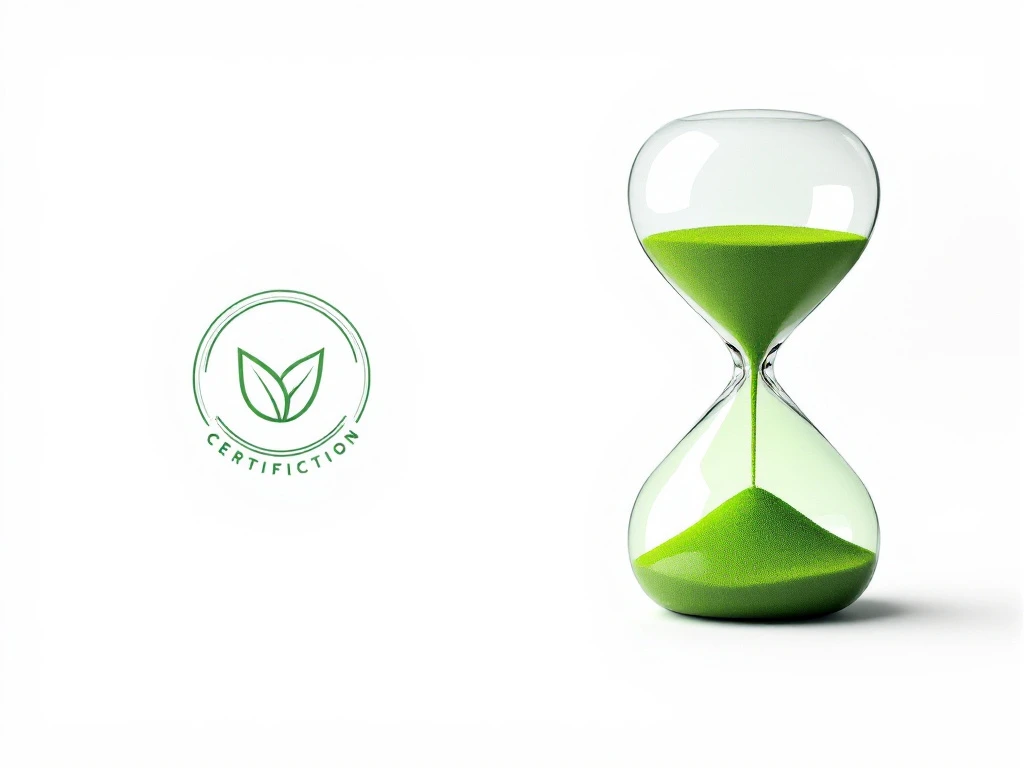
Andres Fellenberg Van der Molen
Director at Green Partner Europe | Hotels Specialist | Sustainability | Energy Efficiency | Circular Economy | Zero Waste | CSR | ESG | SDG

How long does it take to get ISO 14001 certification?
Achieving environmental management certification typically requires 6-12 months for most organizations. This timeframe varies significantly based on your company’s size, existing systems, and resource allocation. Smaller businesses with straightforward operations and strong existing documentation may complete the process in as little as 4-6 months. Larger organizations with complex environmental aspects often need the full year or more to implement all necessary changes and successfully pass certification audits.
How long does it take to get ISO 14001 certification?
The journey toward environmental management certification typically spans 6-12 months for most organizations. This timeframe represents an average, with actual duration heavily dependent on several key factors. Companies with minimal environmental impacts and established management systems might complete the process in just 4-6 months. Conversely, organizations with multiple locations, complex operations, or starting from scratch may require 12-18 months to fully implement all requirements.
It’s important to understand that certification isn’t simply about documentation—it requires demonstrating effective implementation over time. This means allowing sufficient time for your environmental management system to operate and generate records before certification auditors evaluate its effectiveness. At Green Partner, we’ve observed that rushing this process rarely leads to successful certification or meaningful environmental improvements.
What factors affect the ISO 14001 certification timeline?
Several critical variables influence how quickly your organization can achieve environmental certification. Organization size and complexity significantly impact timelines—larger companies with multiple sites or complex operations naturally require more extensive implementation efforts. Your starting point matters tremendously; organizations with existing management systems like ISO 9001 typically adapt more quickly than those building from scratch.
Staff expertise and availability represent another crucial factor. Without dedicated personnel who understand environmental management principles, the process often stalls. Similarly, leadership commitment accelerates implementation by ensuring necessary resources are allocated. The quality of your existing documentation and the complexity of your environmental aspects and impacts also directly affect certification timelines.
What are the main stages of ISO 14001 certification?
The certification journey follows distinct phases, each requiring specific timeframes. The process typically begins with a gap analysis (1-2 weeks) to evaluate current practices against standard requirements. Planning then follows (2-4 weeks), where you’ll develop project timelines and allocate resources. The implementation phase (3-6 months) represents the most time-intensive stage, involving documentation development, training, and establishing operational controls.
Before external assessment, organizations conduct internal audits (2-4 weeks) to verify system effectiveness, followed by management review (1-2 weeks). The formal certification audit occurs in two stages: a documentation review and an implementation audit, collectively taking 1-3 months depending on auditor availability and initial findings. Each stage builds upon previous work, creating a comprehensive environmental management framework.
How can you prepare for ISO 14001 certification?
Proper preparation significantly streamlines the certification process. Start by assembling a cross-functional team with representatives from key departments to ensure comprehensive implementation. Gathering baseline environmental data early helps identify significant impacts requiring control. Document existing environmental processes to avoid duplicating efforts during implementation.
Identify all relevant environmental regulations applying to your operations—this regulatory register forms a critical certification requirement. Plan training needs for different personnel levels, from awareness sessions for general staff to detailed training for those managing environmental aspects. Consider engaging with experts about ISO 14001 certification to guide your preparation effectively.
Is expedited ISO 14001 certification possible?
Accelerating certification is feasible under certain circumstances. Organizations with previous management system experience (particularly ISO 9001) can leverage existing processes and documentation frameworks. Hiring experienced consultants provides specialized expertise that prevents common pitfalls and focuses efforts on critical requirements. Dedicating internal resources exclusively to implementation rather than adding responsibilities to already-busy staff significantly accelerates progress.
Using pre-existing templates and documentation frameworks saves considerable development time. However, even with these advantages, certain minimum timeframes remain unavoidable—the system must operate long enough to generate sufficient implementation evidence before certification audits.
What are common delays in ISO 14001 certification?
Several predictable bottlenecks frequently extend certification timelines. Insufficient resource allocation—particularly not designating specific personnel with dedicated time for implementation—consistently causes delays. Lack of management commitment manifests as limited funding, minimal participation, or changing priorities. Inadequate training leaves staff unable to fulfill their environmental responsibilities effectively.
Organizations with particularly complex operations involving numerous environmental aspects require more extensive controls and monitoring. Poor documentation practices create rework and confusion during implementation. We’ve observed that organizations underestimating these challenges often experience frustrating certification delays.
How does ISO 14001 certification renewal work?
Environmental certification operates on a three-year cycle with ongoing maintenance requirements. Organizations undergo surveillance audits, typically annually, which examine portions of the management system to ensure continued compliance. Every three years, a full recertification audit comprehensively reviews the entire system.
Maintaining certification requires demonstrating continuous improvement through environmental objectives, addressing nonconformities promptly, and adapting to changing circumstances. This ongoing process demands considerably less time than initial certification but requires consistent attention to prevent certification lapses.
Your ISO 14001 certification journey: Key takeaways and next steps
Understanding realistic certification timeframes helps establish appropriate expectations and project planning. Strategic implementation focusing on high-impact environmental aspects typically proves more efficient than attempting to address everything simultaneously. Proper preparation dramatically reduces certification challenges, particularly regarding regulatory compliance and environmental impact assessment.
Remember that certification represents a beginning rather than an endpoint—maintaining an effective environmental management system delivers ongoing benefits beyond the certificate itself. At Green Partner, we guide organizations through this entire journey, helping transform sustainability commitments into practical operational realities aligned with European environmental standards.
